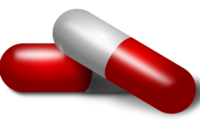The safety leader’s role in changing culture
Creating Dissatisfaction

A rather simple description of culture is: That’s just the way we do things around here.
From a safety & health perspective, the way things are done stays the same until someone or some group, with the competency and power to make change, becomes dissatisfied with the S&H status quo.
There are a number of things that can cause the required level of dissatisfaction with the status quo and motivate change. It could be a regulation, high levels of injury/illness, a catastrophic event, an OSHA inspection – who knows for sure?
S&H leaders often times must be the transformational leaders that create organizational S&H dissatisfaction before:
- People are negatively affected (being injured or becoming ill)
- An organization’s trust in tarnished
- Financial viability is threatened
Change is only the start. A safety & health management system needs to be implemented to keep these changes in place and promote continuous improvement. This is the road to changing the safety and health culture.
Cultural change does not happen overnight or with a single intervention. This takes time, often several years, and requires a long-term commitment and belief that the actions being taken will result in a change to the safety and health culture (the way we do things around here).
New measures of performance
The Center for Safety & Health Sustainability (CSHS) was formed in 2011. CSHS represents more than 85,000 workplace safety and health professionals worldwide. CSHS has researched and reported on the importance of occupational health and safety (OHS) as a major indicator of an organization’s overall sustainability and the need to adopt OHS performance indicators.
The performance indicators are:
- Safety and Health Social Responsibility Commitment
- Codes of Business Conduct
- Effective Safety and Health Management System
- Professional Safety and Health Competencies
- Senior Leadership Oversight of Safety and Health
- Worker Engagement in Safety and Health
- Transparent Reporting of Safety and Health - Leading and Lagging Performance Indicators
Selling senior leaders
The performance indicators reinforce my belief that before consequences happen safety and health professionals as transformational leaders need to make the case with senior leadership of the importance of:
- People
- Public / Worker Trust
- Profit / Technology-Enabling
People
The highest responsibility of senior and safety and health leadership is to protect people. This seems like common sense. But senior leadership needs to be reminded of this value, reflect on its importance, and relate the well-being of people to their personal life and values.
It’s my belief that people who feel safe and protected by leadership feel trust and want to be an integral part of in an organization’s vision and success. There are many ways leaders can foster the feeling of safety and security. A critical behavior is to “Walk the Talk” – (Rather overused phrase but essential).
This isn’t the only way for senior and safety leadership to demonstrate their commitment to safety and health excellence. Visible actions are needed. This goes back to the saying, “Don’t just do as I say, do as I do.”
Public / Worker Trust
People who feel safe and secure in their work environment (a safe work culture) have a level of trust that causes them to want to be an integral part of an organization’s vision and success, resulting in high levels of performance and long-term business success.
Public trust is a sweeping term that embraces an organization’s:
- Reputation and Integrity
- Corporate Citizenship
- Products
Public trust is hard to gain and easy to lose. No organization wants to be in headlines of the national news, USA Today, The Wall Street Journal or social media in a negative light -- but always looking for ways to receive positive recognition and boast public trust.
Profit
Companies cannot remain in business if they are not profitable. As stated in the CSHS vision, all organizations must recognize and act on occupational safety, health and well-being as part of its sustainable business practices.
Covering the cost of injuries
A powerful tool to demonstrate how safety and health contributes to profit is sales equivalent dollars (SED).
The actual total cost of injury and illness, or monies spent on workers’ compensation premiums would be part of profit. It is the profit from the sale of products or services that pay for the injury/illness or workers compensation costs.
SED = Injury/Illness or WC Costs X 100 Percent / Profit Margin as a Percent
In 2017 the average profit margin for Standard and Poor 500 companies was 11%. Using information from the National Council on Compensation Insurance Inc. (NCCI), the average total cost of a burn is $91,688. This information results in:
SED = $91,688 X 100% / 11% = $833,527 in sales to cover the cost of one burn injury
For a business to be sustainable it must know the total cost of losses and the percentage of sales required to cover the cost based on its profit margin.
Summary
- Safety and health transformational leaders are needed to continuously improve the safety and health culture and implement sustainable safety and health management systems.
- The Center for Safety and Health Sustainability provides important research and tools.
- Senior organizational leadership must be held accountable to and educated in how the safety culture and sustainable safety and health management systems contribute to business success.
- Paramount to this understanding are: People; Public / Worker Trust; Profits.
Looking for a reprint of this article?
From high-res PDFs to custom plaques, order your copy today!





